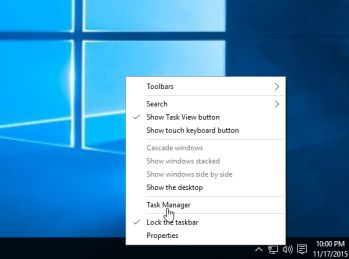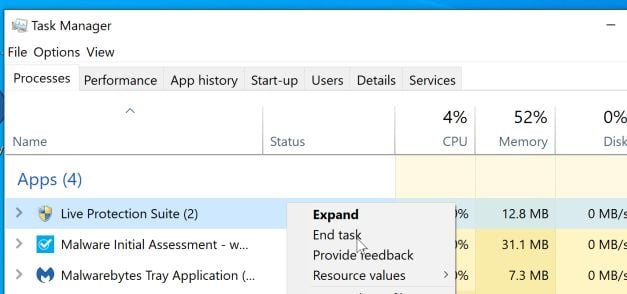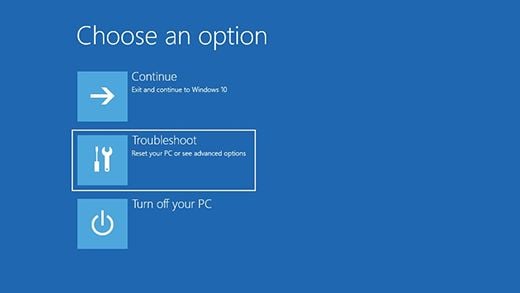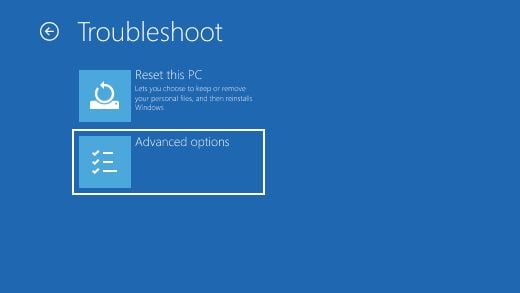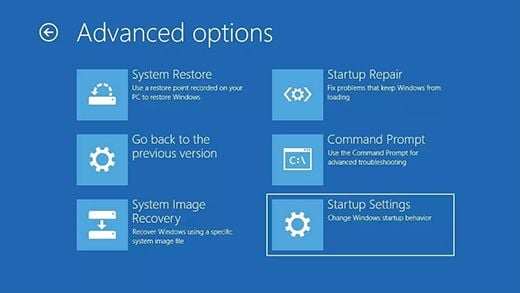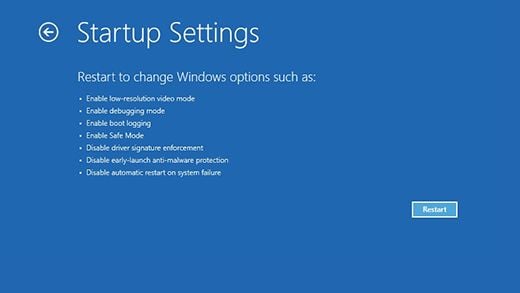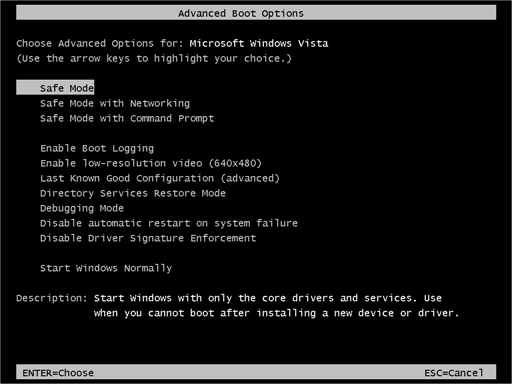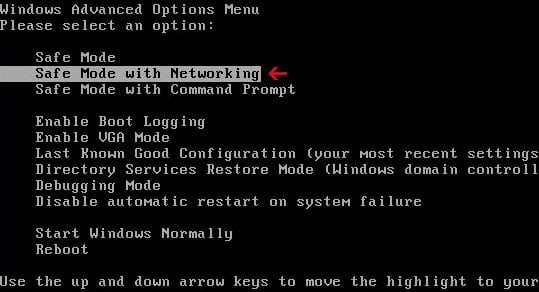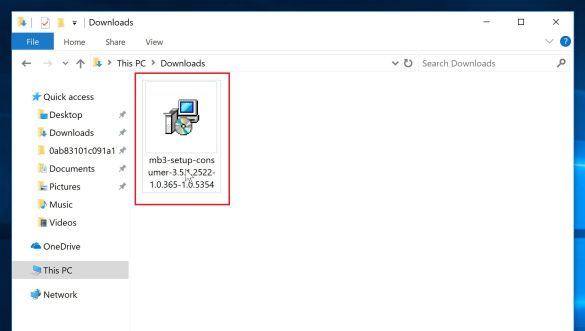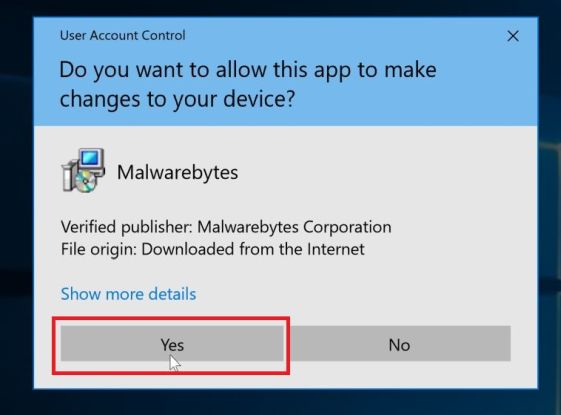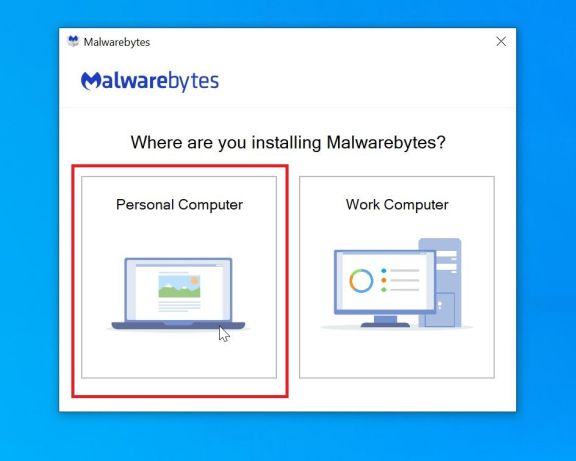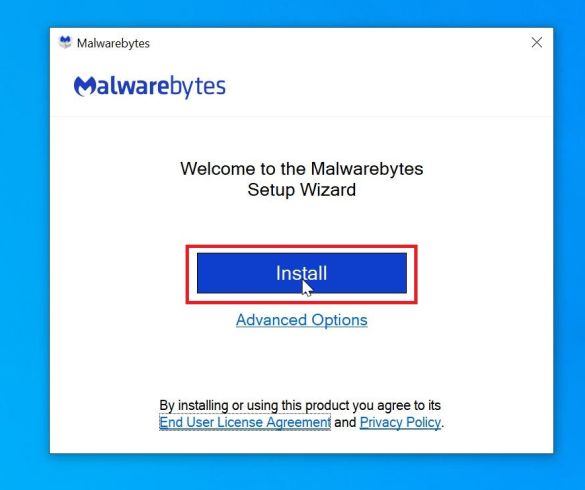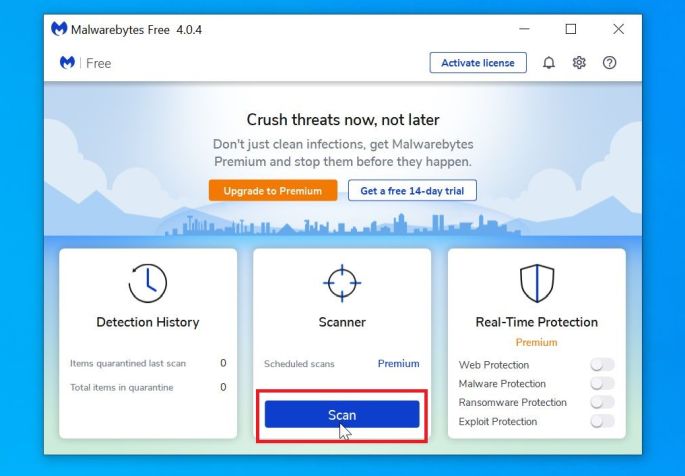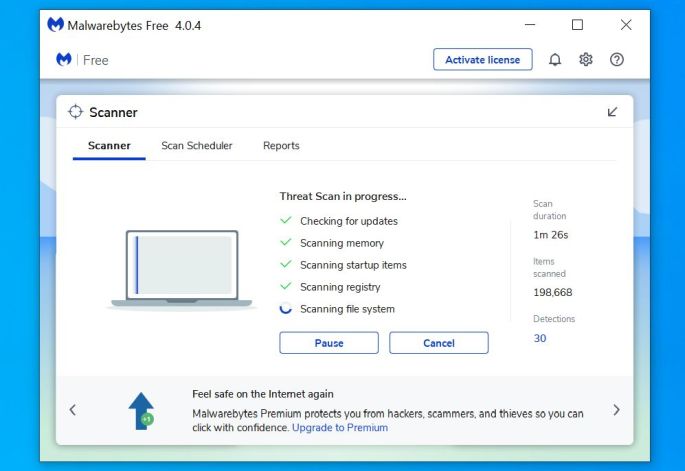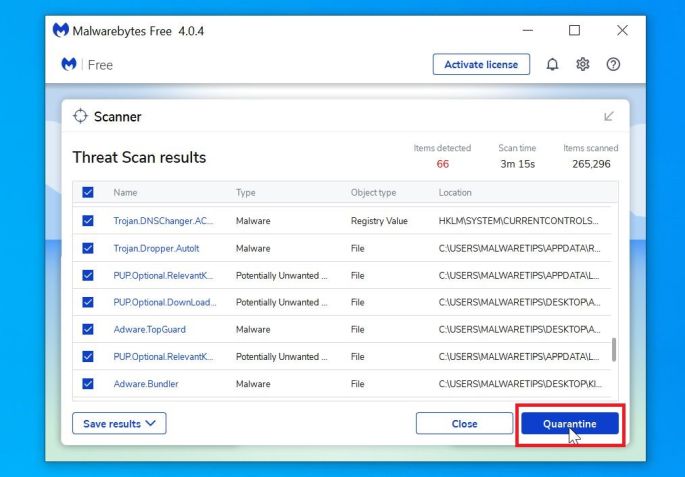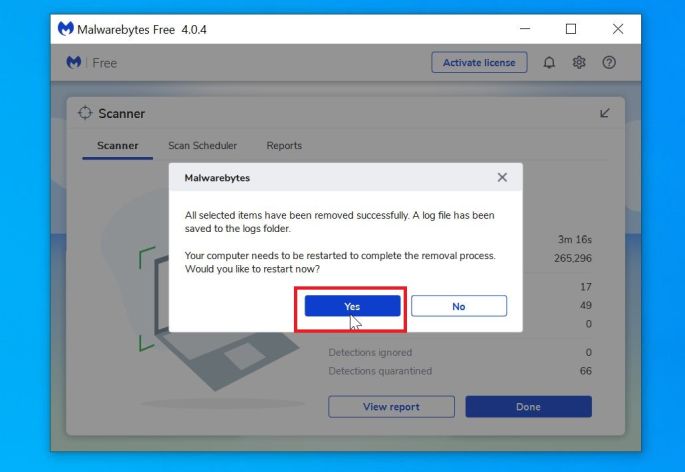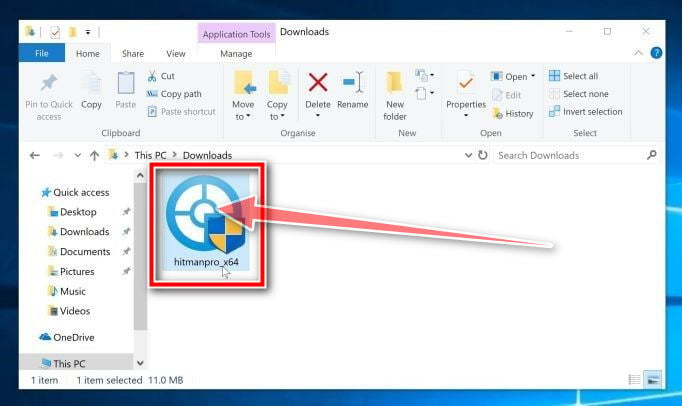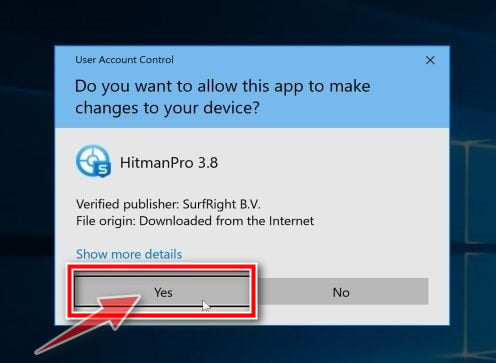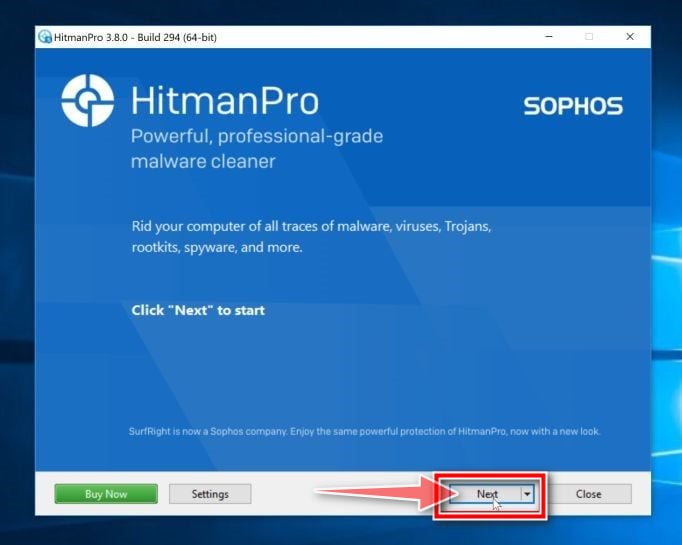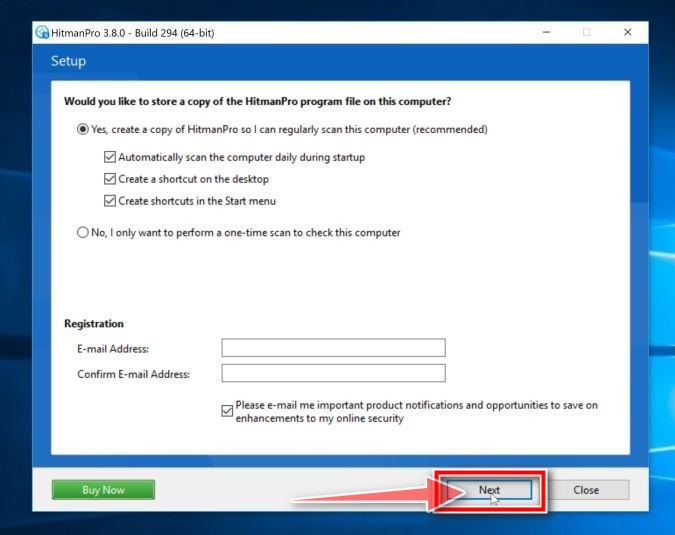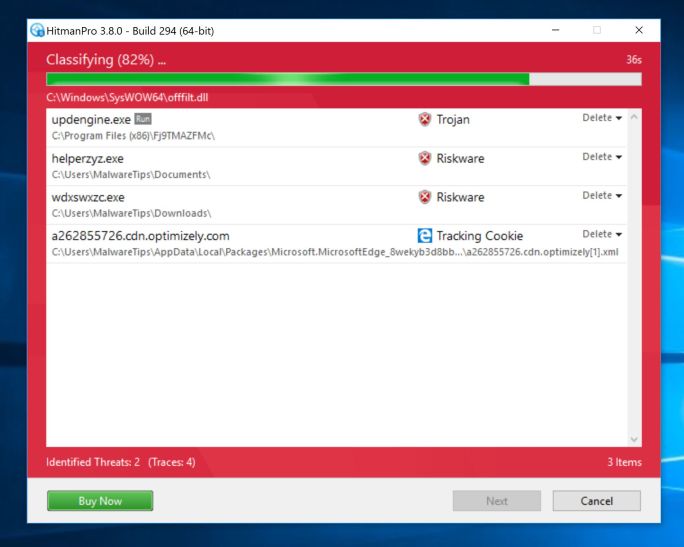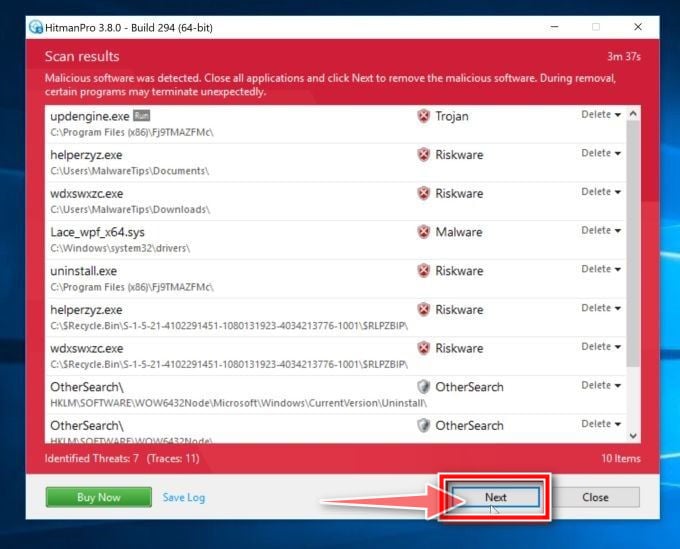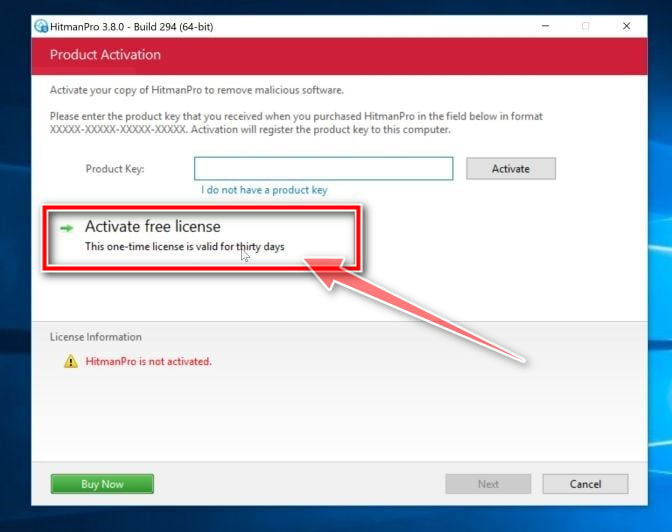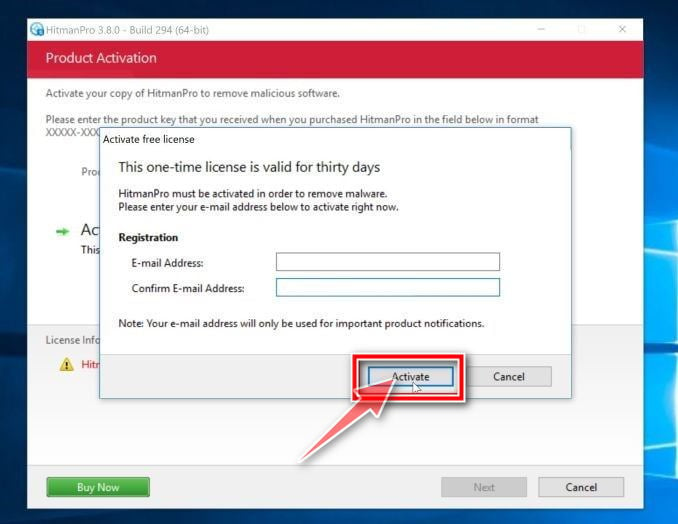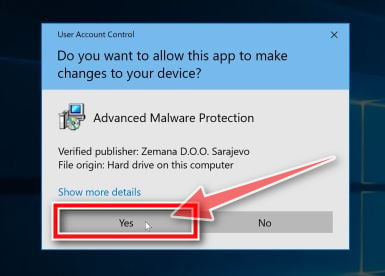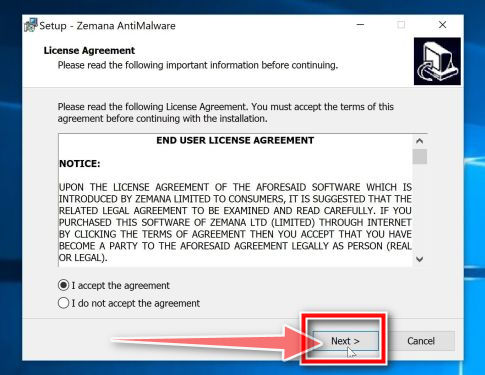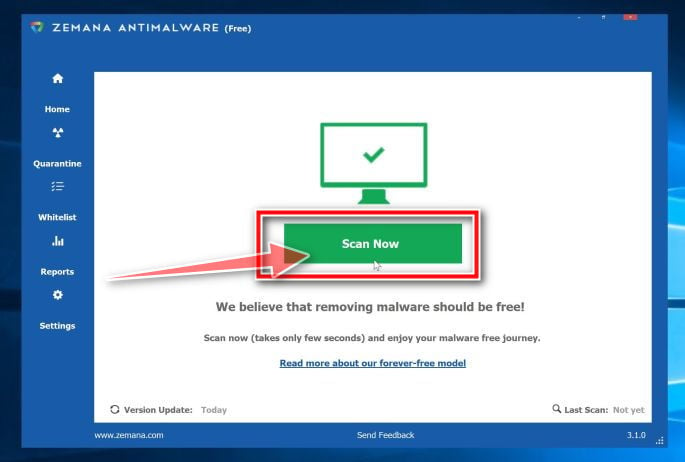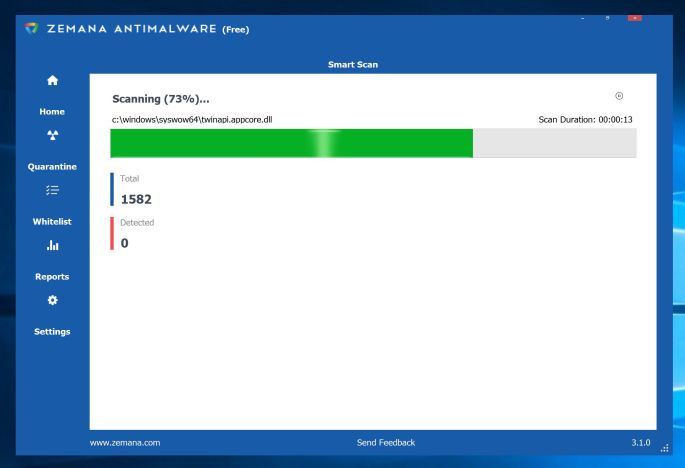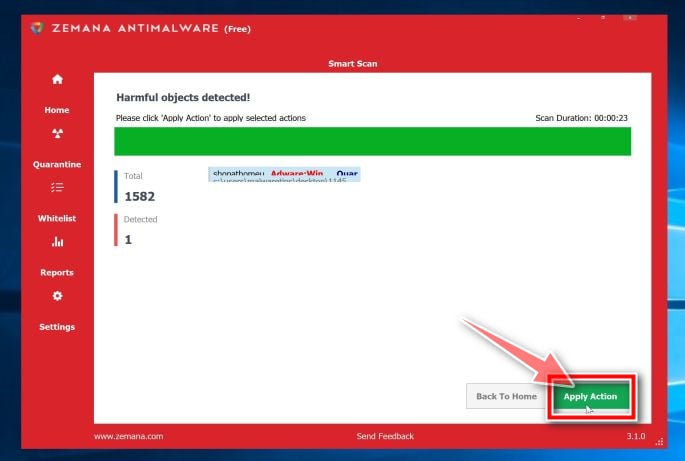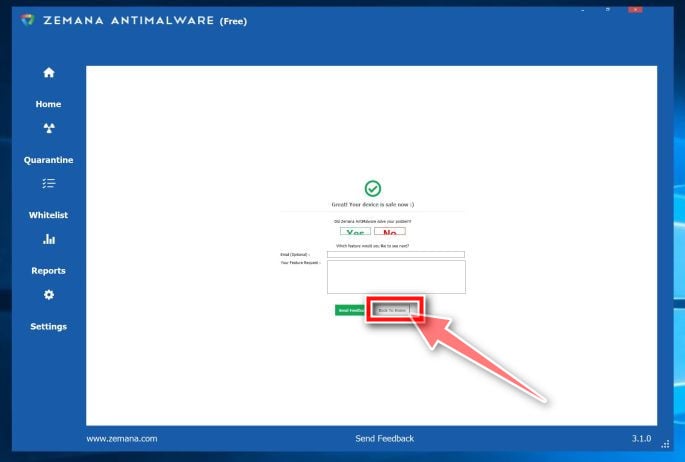Live Protection Suite is a rogue anti-virus program that displays fake scan results, false security warnings, and hijacks your web browser to scare you into buying this malicious program.
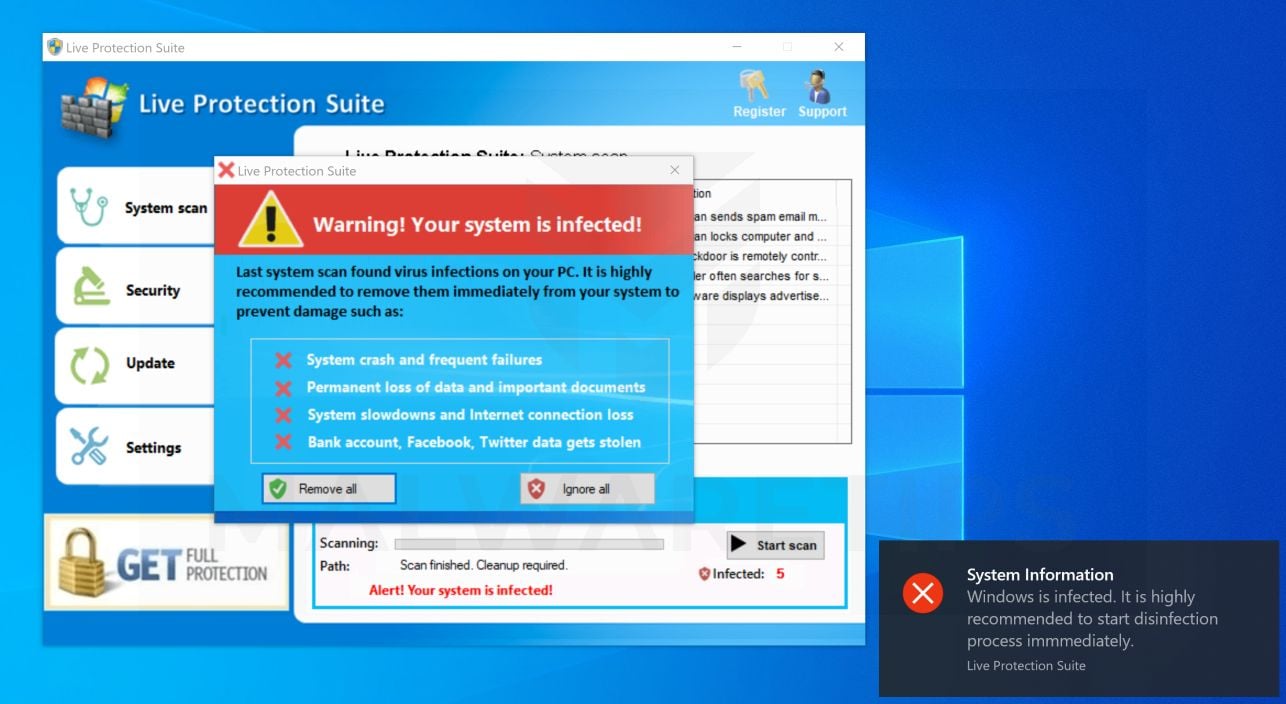
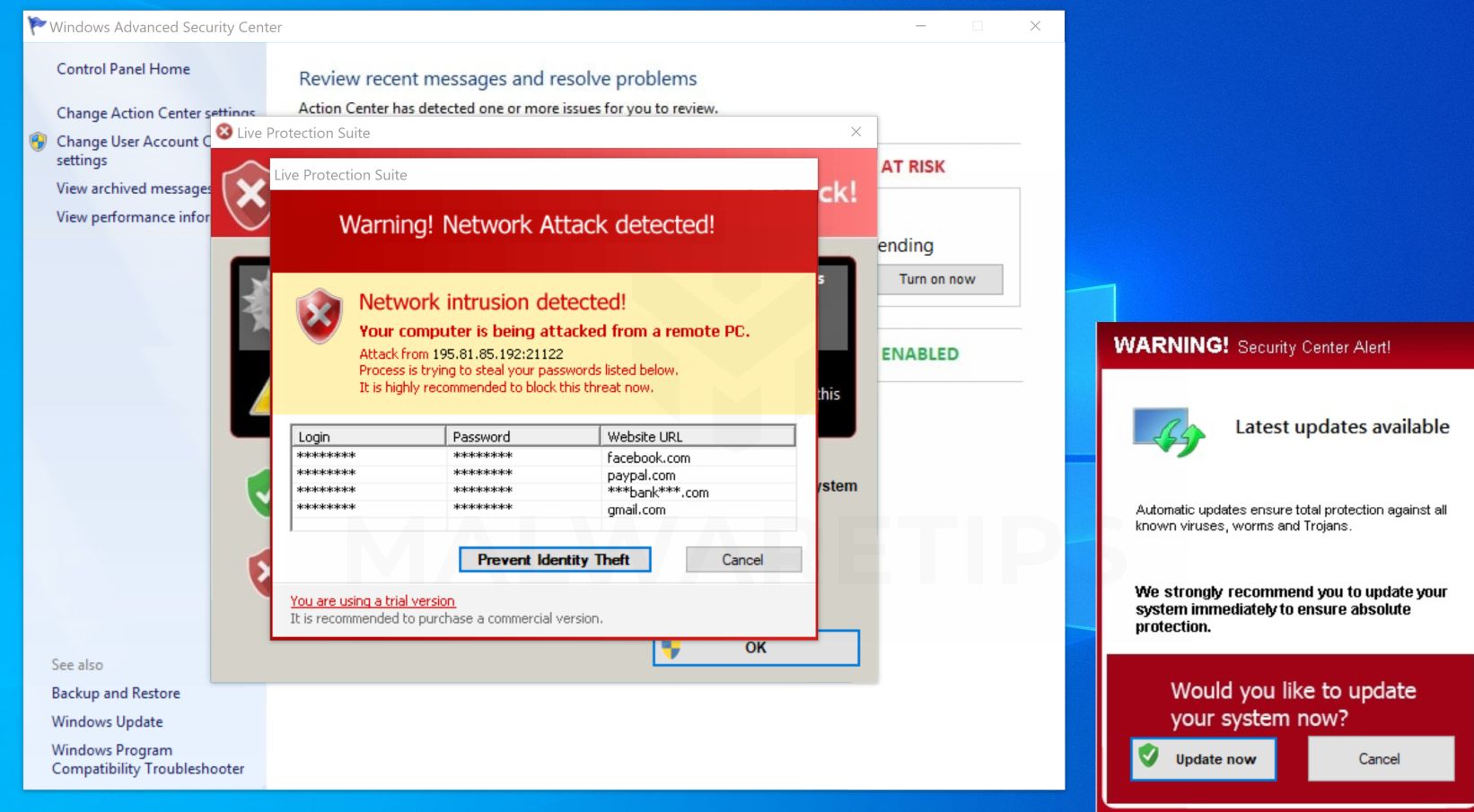
This Article Contains:
What is Live Protection Suite?
Live Protection Suite is a rogue software because it pretends to be an anti-virus program, however, this program displays fake scan results and report non-existing computer infections.
When installed, Live Protection Suite will be configured to start every time you try to launch a program on your computer. Once started it will scan your computer and state that your computer has numerous infections on it, but will not allow you to remove any of these infections until you first purchase the program.
In this case, not only is Live Protection Suite going to disrupt your system, it’s going to try and trick you into making a purchase using your credit card. It’s important to remember that by purchasing the “claimed full version to remove the viruses” you will be submitting your personal information to unscrupulous persons and may also end up being a victim of credit card or identity fraud or theft.
Live Protection Suite will show a variety of security warnings that are designed to trick you into thinking that your computer has a serious security issue. These alerts include:
System Information
Live Protection Suite has found viruses on your computer. It is recommended to disinfect files as soon as possible.Warning
Last system scan found virus infections on your PC. It is highly recommended to remove them immediately from your system to prevent damage.
Live Protection Suite has detected a leak of your files through the Internet. We strongly recommend that you block the attack immediately.Spyware activity alert!
Spyware.BrowserDeath activity detected. This kind of spyware is attempts to steal passwords from Internet Explorer, Mozilla Firefox, Opera and other programs, including logins and passwords from online banking sessions, eBay, PayPal, etc.System Alert
Malware has been detected on your computer. Click here to protect your PC with Live Protection SuiteSystem files modification alert!
Some critical system files of your computer were modified by malicious programs. It may cause system instability and data loss. Click here to block unauthorized modification by removing threats (Recommended).Windows Security Alert
Antivirus software is not activated. Your system is at risk now. Windows highly recommends you to activate your antivirus software to protect your system against malicious intrusions from the Internet.
As you can imagine, these fake error messages and everything they state are just a scam to try and scare you into buying Live Protection Suite.
How did Live Protection Suite virus get on my computer?
Live Protection Suite is distributed through several means. Malicious websites, or legitimate websites that have been hacked, can infect your machine through exploit kits that use vulnerabilities on your computer to install this rogue antivirus without your permission.
Another method used to propagate Live Protection Suite is spam email containing infected attachments or links to malicious websites. Cyber-criminals spam out an email, with forged header information, tricking you into believing that it is from a shipping company like DHL or FedEx. The email tells you that they tried to deliver a package to you, but failed for some reason. Sometimes the emails claim to be notifications of a shipment you have made. Either way, you can’t resist being curious as to what the email is referring to – and open the attached file (or click on a link embedded inside the email). And with that, your computer is infected with the Live Protection Suite virus.
The threat may also be downloaded manually by tricking the user into thinking they are installing a useful piece of software, for instance, a bogus update for Adobe Flash Player or another piece of software.
The Live Protection Suite infection is also prevalent on peer-to-peer file sharing websites and is often packaged with pirated or illegally acquired software.
How to remove Live Protection Suite (Virus Removal Guide)
Please perform all the steps in the correct order. If you have any questions or doubt at any point, STOP and ask for our assistance.
- STEP 1: Stop Live Protection Suite fake error messages
- STEP 2: Use Malwarebytes to remove Live Protection Suite virus
- STEP 3: Use HitmanPro to scan for malware and unwanted programs
- STEP 4: Double-check for malicious programs with Zemana AntiMalware Free
STEP 1: Stop Live Protection Suite fake error messages
Option 1: Stop Live Protection Suite fake error messages with Task Manager
To stop the Live Protection Suite fake error messages, we can use the Windows Task Manager and close the malicious process.
It’s important to understand that by ending the Live Protection Suite process, the Trojan will not be removed from your computer, instead, it will just stop displaying the fake error messages so that you’ll be able to complete this removal guide without being interrupted by this infection.
- Open Task Manager by right-clicking the taskbar and then clicking Task Manager. Alternatively, to start the Windows Task Manager, you can press Ctrl+Alt+Del and click on Task Manager or simply press on Ctrl+Shift+Esc.

- Scroll through the list till you see Live Protection Suite’s process and left-click on it once so it becomes highlighted. Once you have selected the browser’s process, click on the End Task button as shown in the picture below.

- Live Protection Suite fake error messages should now be closed, so you can continue with STEP 2 from this guide.
Option 2: Stop Live Protection Suite fake error messages with Safe Mode with Networking
If the above process does not work, you will need to start your computer in Safe Mode with Networking to bypass the Live Protection Suite virus lock screen. Safe mode starts Windows in a basic state, using a limited set of files and drivers, so this will prevent Live Protection Suite virus from running at startup.
There are two versions of safe mode: Safe Mode and Safe Mode with Networking. They’re quite similar, but Safe Mode with Networking includes the network drivers and services you’ll need to access the Internet.
Windows 10 or Windows 8
Before you enter safe mode, you need to enter the Windows Recovery Environment (winRE). It’s also possible that you can repeatedly press the F8 key during boot (before the Windows logo is displayed) to access these screens. Some PC manufacturers disable this action, and on some PCs, the startup is fast enough that it’s hard to hit the key at the right time. But, there’s no harm in trying.
If mashing the F8 key didn’t work, we will need to turn off and on your device twice in a row before Windows starts. Doing this should automatically present you with a “Recovery” option that lets you see advanced repair options.
- Hold down the power button for 10 seconds to turn off your device.
- Press the power button again to turn on your device.
- On the first sign that Windows has started (for example, some devices show the manufacturer’s logo when restarting) hold down the power button for 10 seconds to turn off your device.
- Press the power button again to turn on your device.
- When Windows restarts, hold down the power button for 10 seconds to turn off your device.
- Press the power button again to turn on your device.
- Allow your device to fully restart. You will enter winRE.
Now that you are in winRE, you will follow these steps to take you to safe mode:
- On the Choose an option screen, select “Troubleshoot“.

- On the “Troubleshoot” screen, click the “Advanced Options” button.

- On the “Advanced Options” page, click the “Startup Settings” option. In Windows 8, this option is labeled “Windows Startup Settings” instead.

- On the “Startup Settings” page, click the “Restart”.

- After your device restarts, you’ll see a list of options. Select option 5 from the list or press F5 for Safe Mode with Networking.
- While your computer is running in Safe Mode with Networking, we will need to download, install and run a scan with Malwarebytes (Step 2).
Windows 7
- Remove all floppy disks, CDs, and DVDs from your computer, and then restart your computer.
- When the computer starts you will see your computer’s hardware being listed. When you see this information start to press the F8 key repeatedly until you are presented with the Advanced Boot Options.

- In the Advanced Boot Options screen, use the arrow keys to highlight Safe Mode with Networking and then press Enter.

STEP 2: Use Malwarebytes to remove Live Protection Suite virus
Malwarebytes is one of the most popular and most used anti-malware software for Windows, and for good reasons. It is able to destroy many types of malware that other software tends to miss, without costing you absolutely nothing. When it comes to cleaning up an infected device, Malwarebytes has always been free and we recommend it as an essential tool in the fight against malware.
The first time you install Malwarebytes, you’re given a free 14-day trial of the premium edition, which includes preventative tools like real-time scanning and specific protection from ransomware. After two weeks, it automatically reverts to the basic free version that will detect and clean up malware infections only when you run a scan. It is important to note that Malwarebytes will run alongside antivirus software without conflicts.
-
Download Malwarebytes.
You can download Malwarebytes by clicking the link below.
 MALWAREBYTES DOWNLOAD LINK
MALWAREBYTES DOWNLOAD LINK
(The above link will open a new page from where you can download Malwarebytes) -
Double-click on the Malwarebytes setup file.
When Malwarebytes has finished downloading, double-click on the mb3-setup-consumer-x.x.x.xxxx.exe file to install Malwarebytes on your PC. In most cases, downloaded files are saved to the Downloads folder.

You may be presented with a User Account Control pop-up asking if you want to allow Malwarebytes to make changes to your device. If this happens, you should click “Yes” to continue with the installation.

-
Follow the on-screen prompts to install Malwarebytes.
When the Malwarebytes installation begins, you will see the Malwarebytes Setup Wizard which will guide you through the installation process. To install Malwarebytes on your PC, click on the “Agree and Install” button.


-
Click on “Scan Now”.
Once installed, Malwarebytes will automatically start and update the antivirus database. To perform a system scan, click on the “Scan Now” button.

-
Wait for the Malwarebytes scan to complete.
Malwarebytes will now start scanning your computer for adware and other malicious programs. This process can take a few minutes, so we suggest you do something else and periodically check on the status of the scan to see when it is finished.

-
Click on “Quarantine Selected”.
When the scan has completed, you will be presented with a screen showing the malware infections that Malwarebytes has detected. To remove the malicious programs that Malwarebytes has found, click on the “Quarantine Selected” button.

-
Reboot your computer.
Malwarebytes will now remove all the malicious files and registry keys that it has found. To complete the malware removal process, Malwarebytes may ask you to restart your computer.

When the malware removal process is complete, you can exit Safe Mode with Networking and continue with the rest of the instructions.
STEP 3: Use HitmanPro to scan for malware and unwanted programs
HitmanPro is a second opinion scanner that takes a unique cloud-based approach to malware scanning. HitmanPro scans the behavior of active files and also files in locations where malware normally resides for suspicious activity. If it finds a suspicious file that’s not already known, HitmanPro sends it to their clouds to be scanned by two of the best antivirus engines today, which are Bitdefender and Kaspersky.
Although HitmanPro is shareware and costs $24.95 for 1 year on 1 PC, there is actually no limit in scanning. The limitation only kicks in when there is a need to remove or quarantine detected malware by HitmanPro on your system and by then, you can activate the one-time 30-day trial to enable the cleanup.
-
Download HitmanPro.
You can download HitmanPro by clicking the link below.
 HITMANPRO DOWNLOAD LINK
HITMANPRO DOWNLOAD LINK
(The above link will open a new web page from where you can download HitmanPro) -
Install HitmanPro.
When HitmanPro has finished downloading, double-click on “hitmanpro.exe” (for 32-bit versions of Windows) or “hitmanpro_x64.exe” (for 64-bit versions of Windows) to install this program on your PC. In most cases, downloaded files are saved to the Downloads folder.

You may be presented with a User Account Control pop-up asking if you want to allow HitmanPro to make changes to your device. If this happens, you should click “Yes” to continue with the installation.
-
Follow the on-screen prompts.
When HitmanPro starts you will be presented with the start screen as shown below. Click on the “Next” button to perform a system scan.


-
Wait for the HitmanPro scan to complete.
HitmanPro will now begin to scan your computer for malicious programs. This process will take a few minutes.

-
Click on “Next”.
When HitmanPro has finished the scan, it will display a list of all the malware that the program has found. Click on the “Next” button to remove the malicious programs.

-
Click on “Activate free license”.
Click on the “Activate free license” button to begin the free 30 days trial and remove all the malicious files from your PC.


When the process is complete, you can close HitmanPro and continue with the rest of the instructions.
STEP 4: Double-check for malicious programs with Zemana AntiMalware Free
Zemana AntiMalware is a free popular on-demand antivirus scanner which can detect and remove malware that even the most well-known anti-virus and anti-malware applications fail to find.
While the Malwarebytes and HitmanPro scans are more than enough, we’re recommending Zemana AntiMalware to users who still have malware related issues or just want make sure their PC is 100% clean.
-
Download Zemana AntiMalware.
You can download Zemana AntiMalware Free by clicking the link below.
 ZEMANA ANTIMALWARE DOWNLOAD LINK
ZEMANA ANTIMALWARE DOWNLOAD LINK
(The above link will open a new web page from where you can download Zemana AntiMalware) -
Double-click on the setup file.
Double-click on the file named “Zemana.AntiMalware.Setup.exe” to start the installation of Zemana AntiMalware. In most cases, downloaded files are saved to the Downloads folder.

You may be presented with a User Account Control dialog asking you if you want to run this file. If this happens, you should click “Yes” to continue with the installation.

-
Install Zemana AntiMalware Free.
Click on the “Next” button to install Zemana AntiMalware on your PC. Follow the on-screen prompts to complete the install process.

-
Click on “Scan Now”.
When Zemana AntiMalware will start, click on the “Scan Now” button to perform a system scan.

-
Wait for the Zemana AntiMalware scan to complete.
Zemana AntiMalware will now scan your PC for malicious files. This process can take a few minutes.

-
Click on “Apply Action”.
When Zemana AntiMalware has finished it will display a list of all the malware that the program found. Click on the “Apply Action” button to remove the malicious files from your computer.

-
Restart your PC.
When the malware removal process is complete, Zemana AntiMalware may need to restart your computer. Click on the “Reboot” button to reset your PC.

Your computer should now be free of the Live Protection Suite Trojan. If you are still experiencing problems while trying to remove the Live Protection Suite virus from your computer, please do one of the following:
- Run a computer scan with ESET Online Scanner
- Ask for help in our Malware Removal Assistance for Windows forum.

